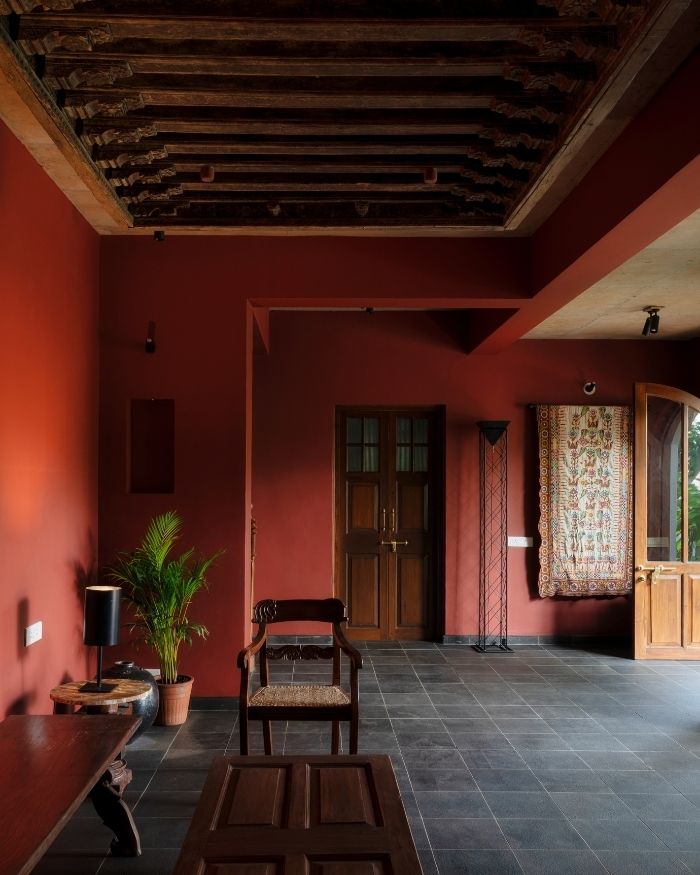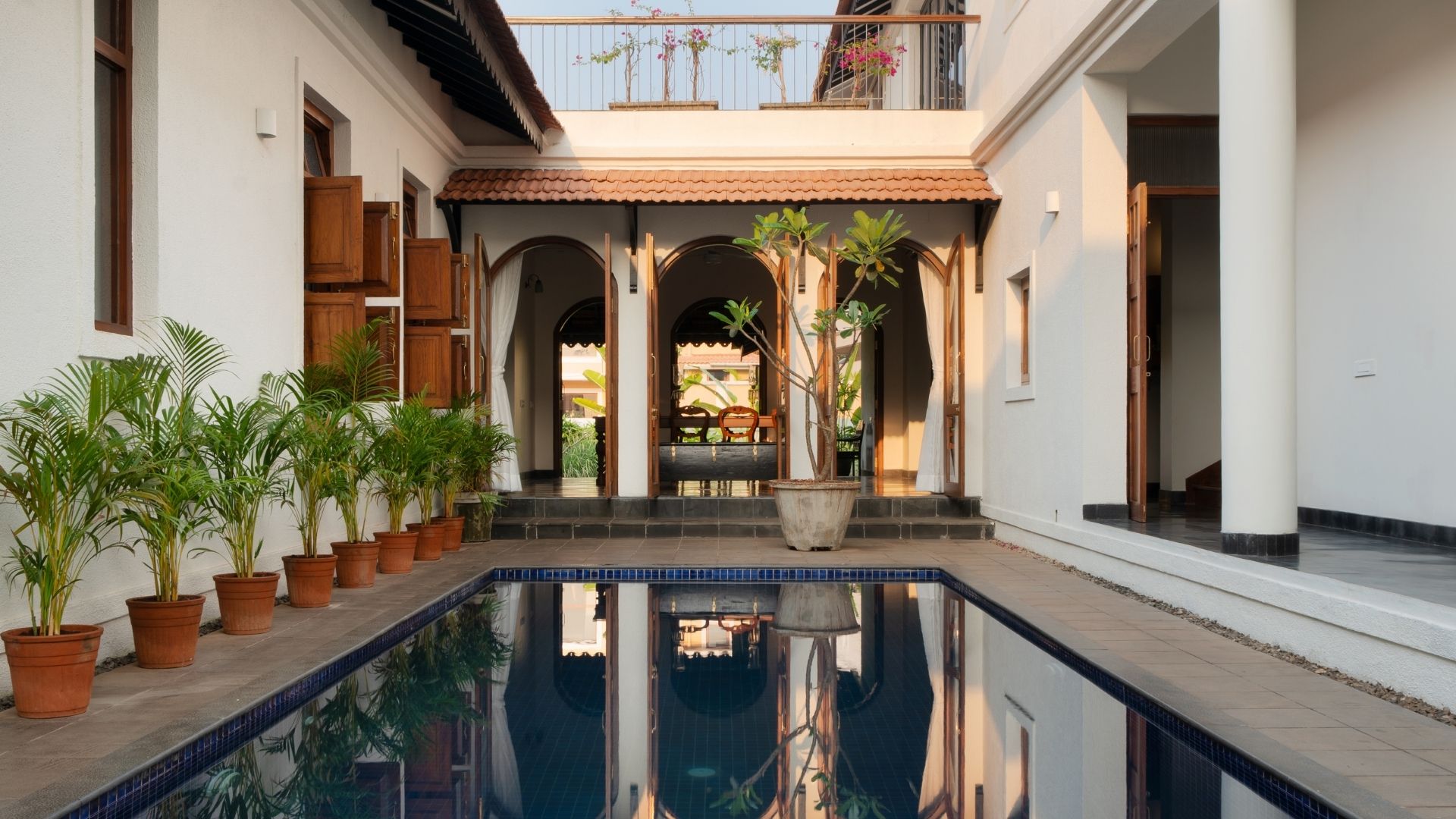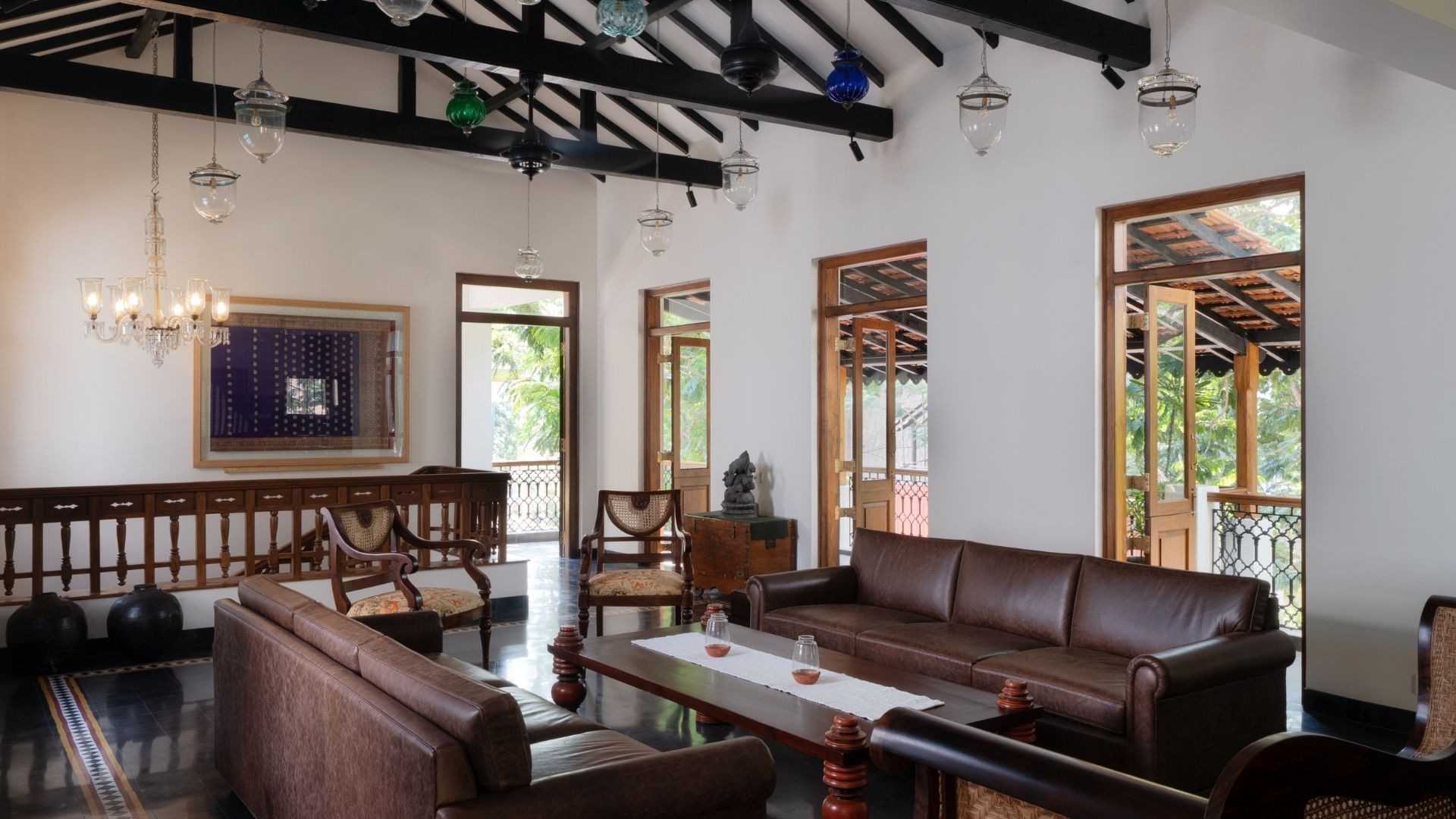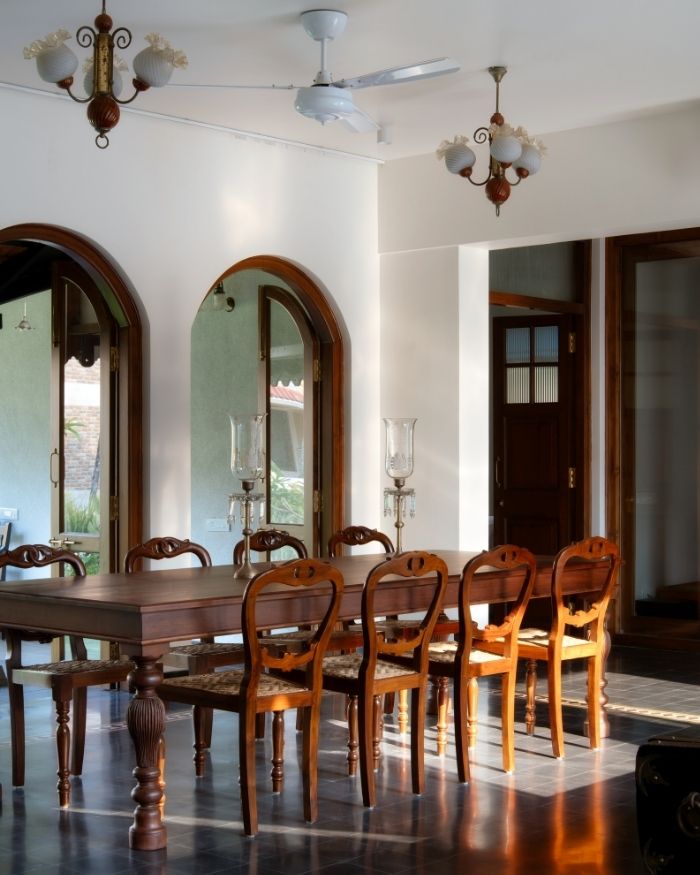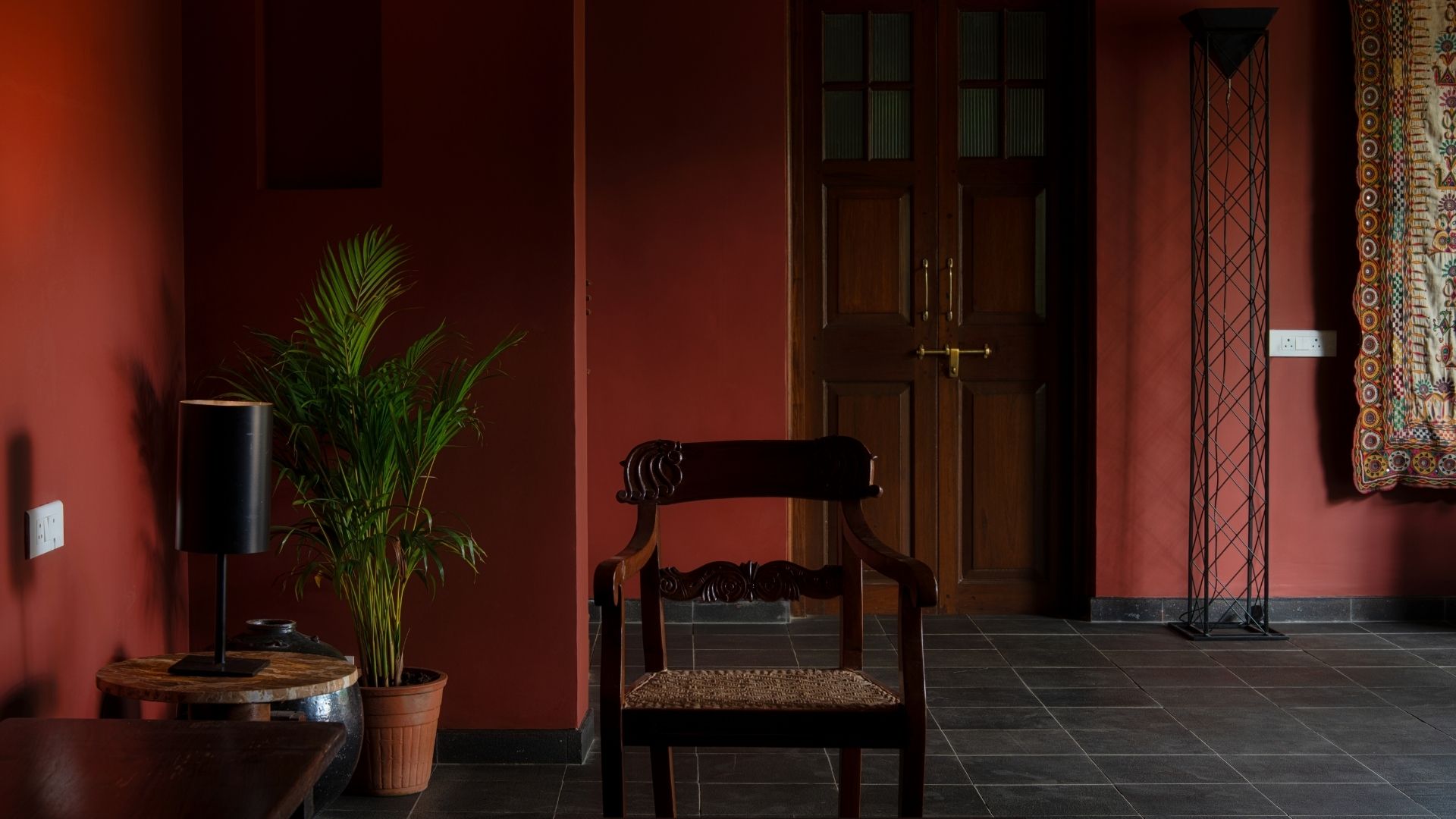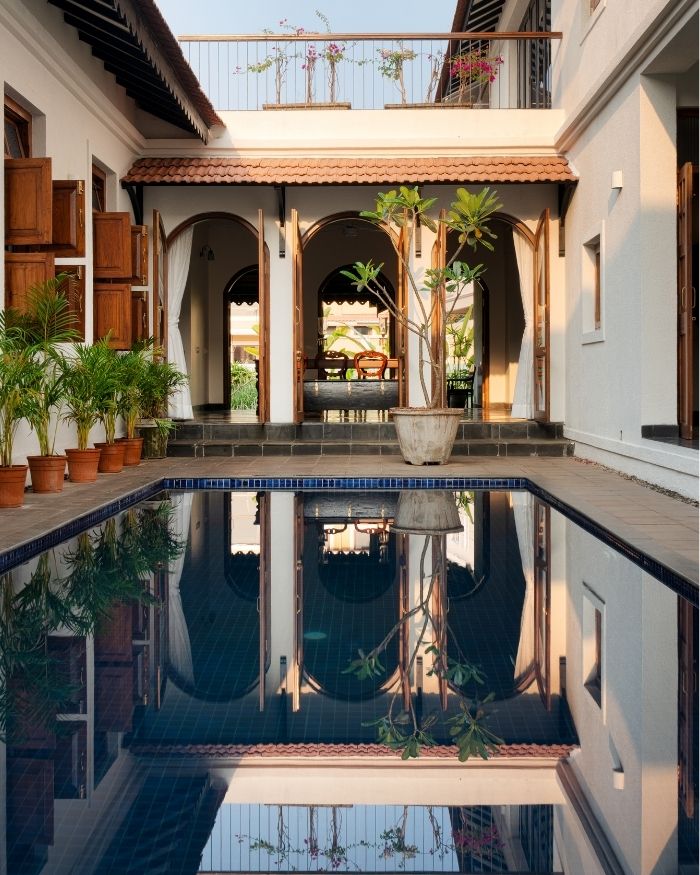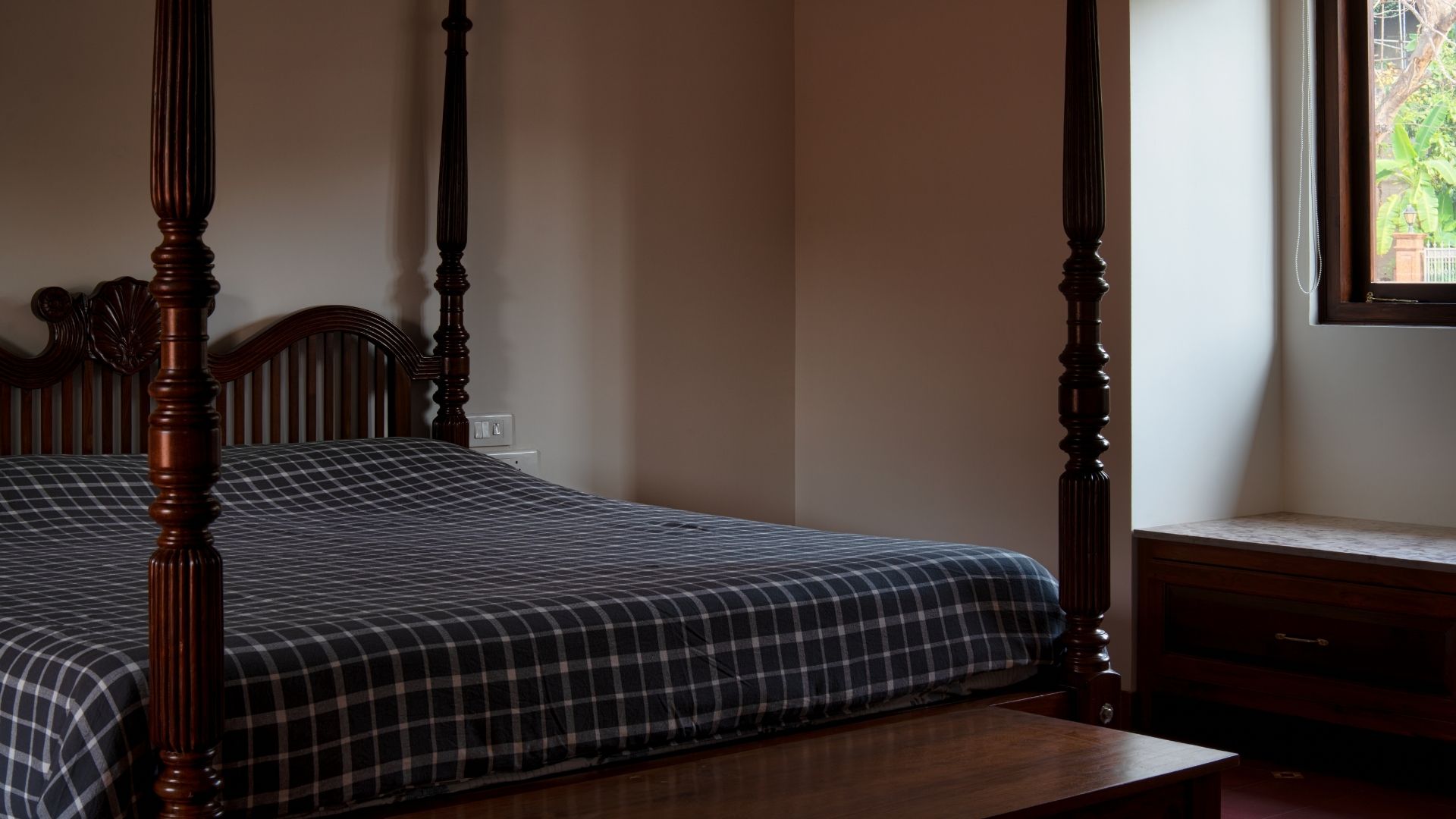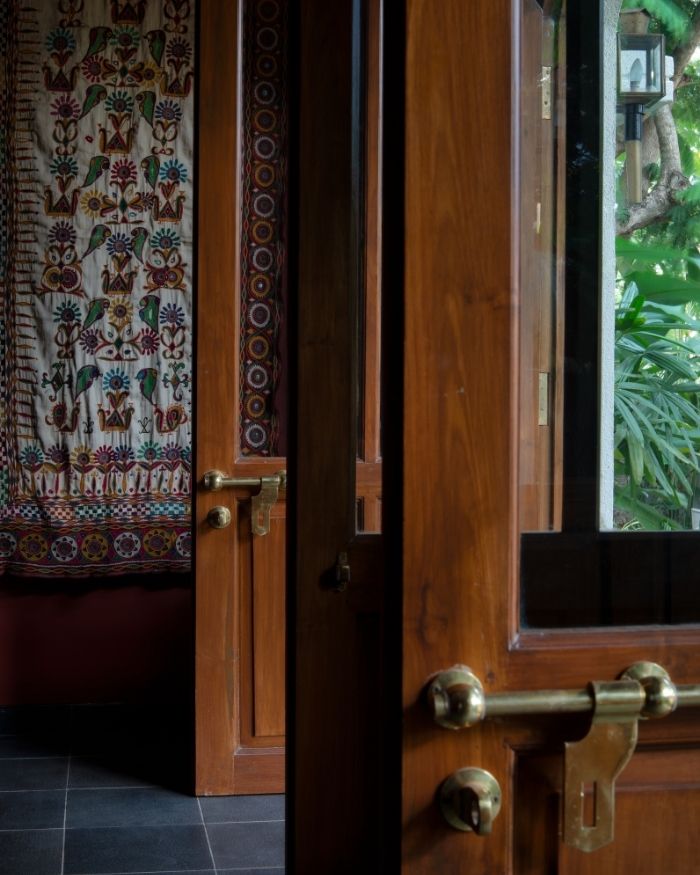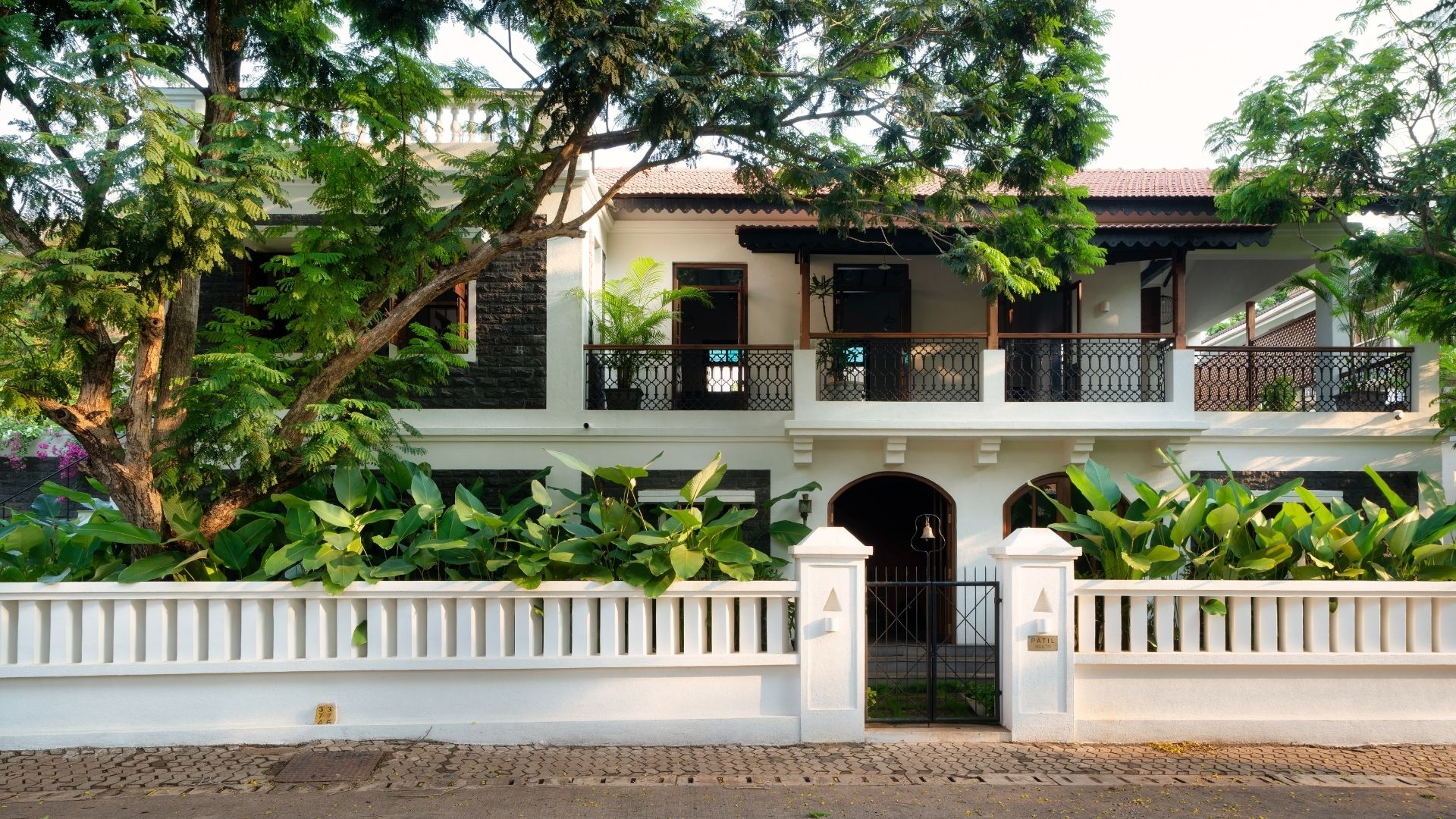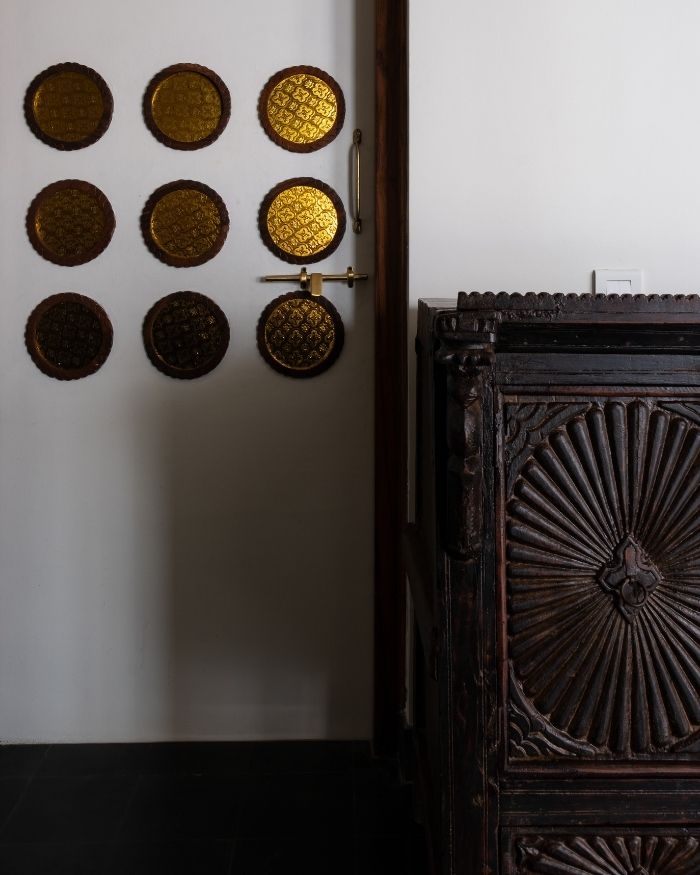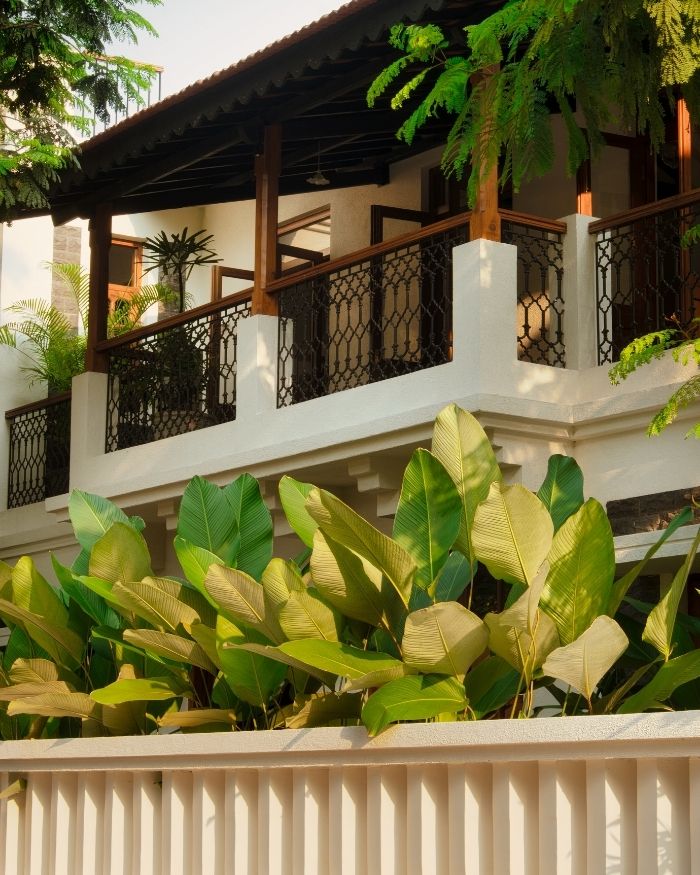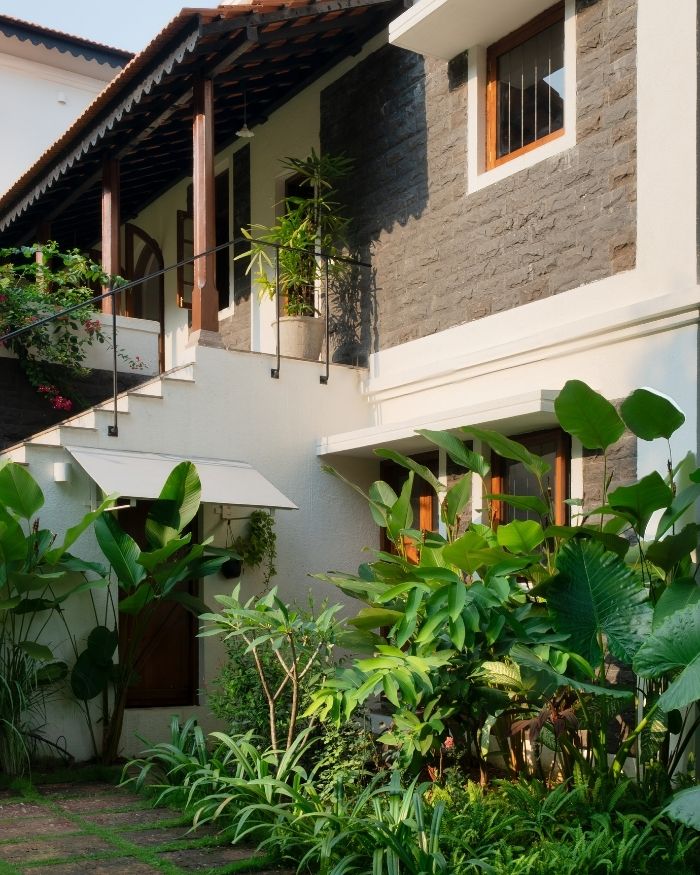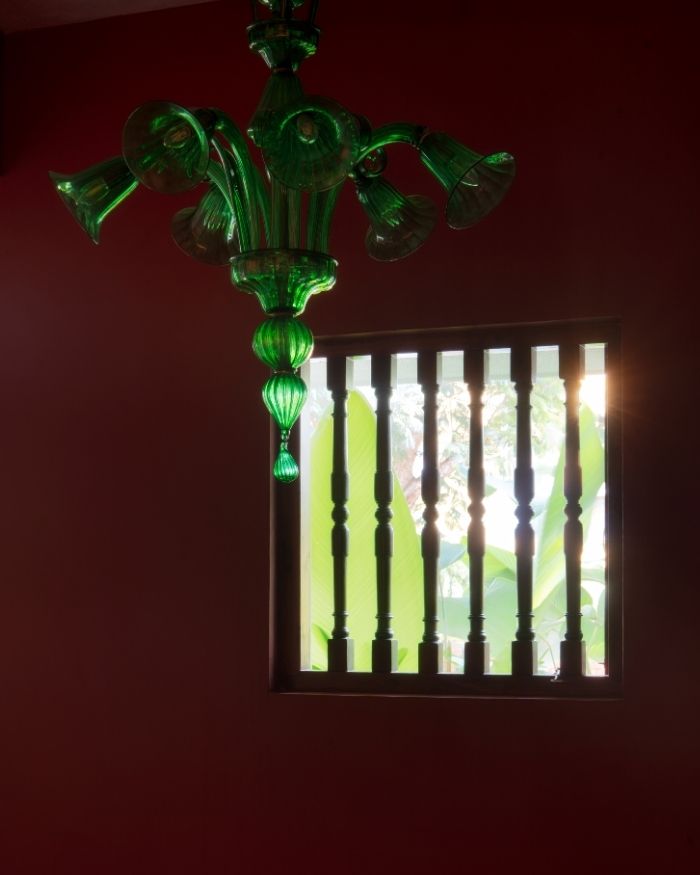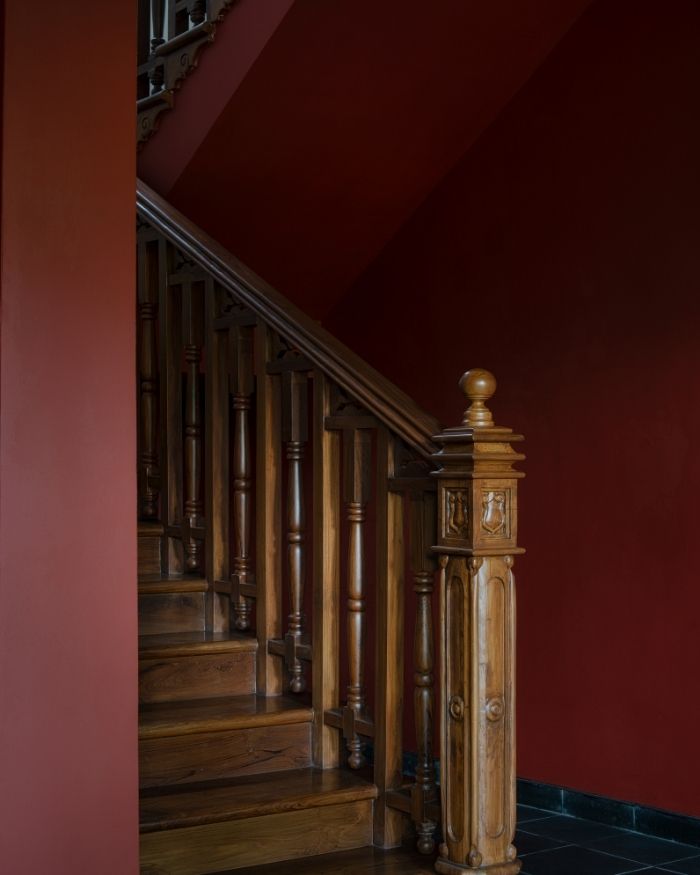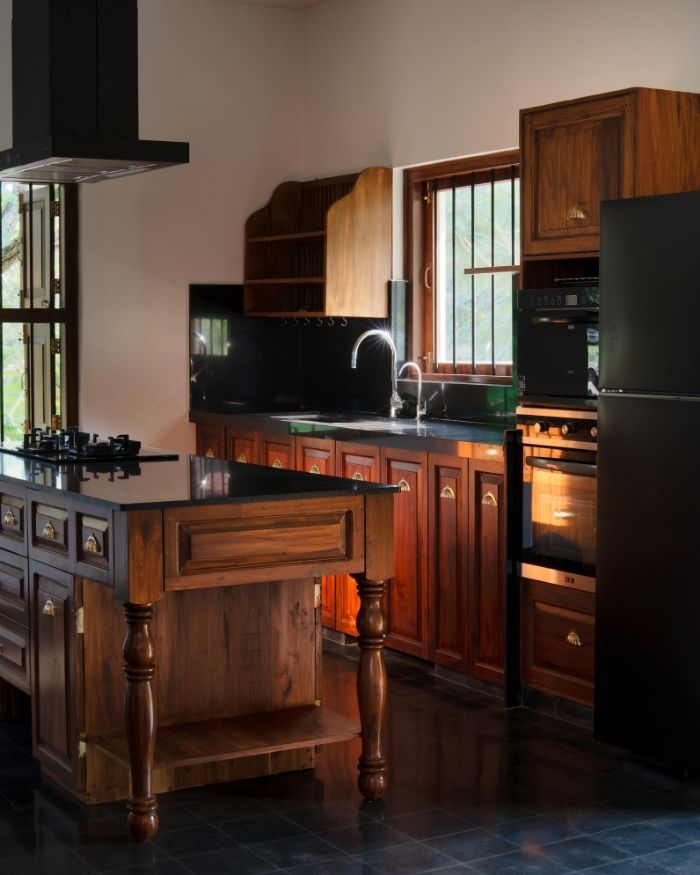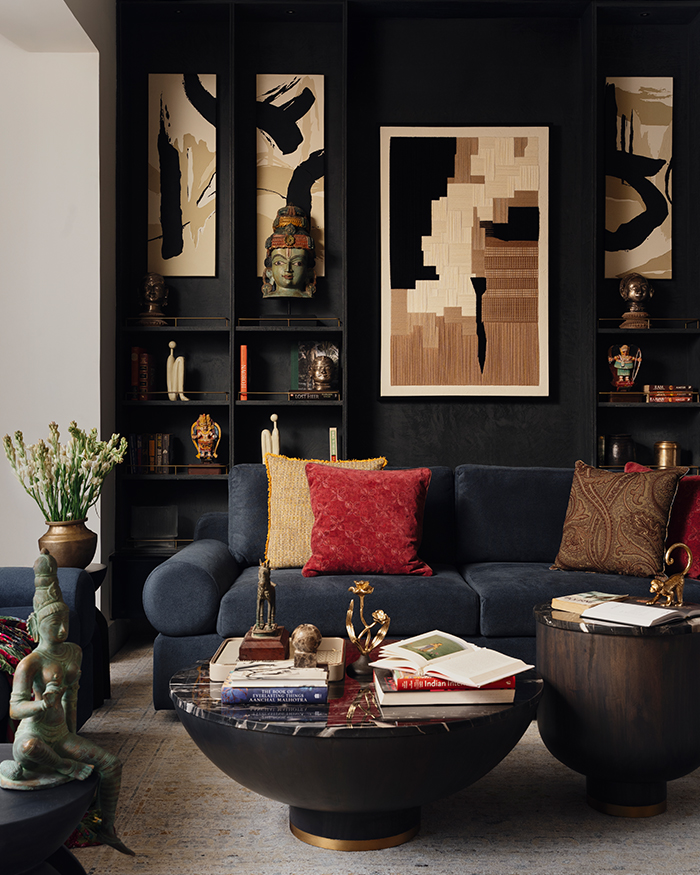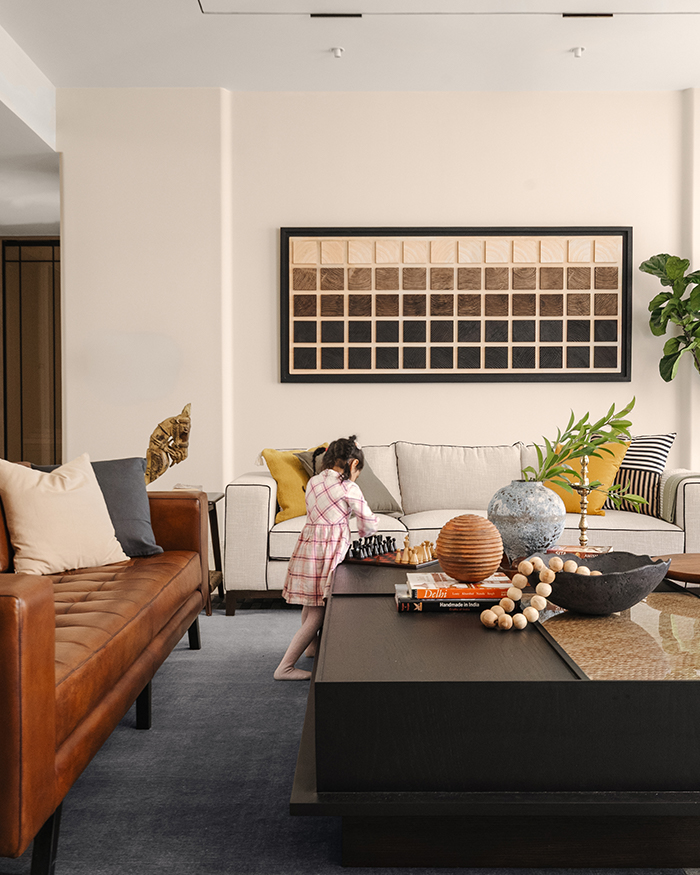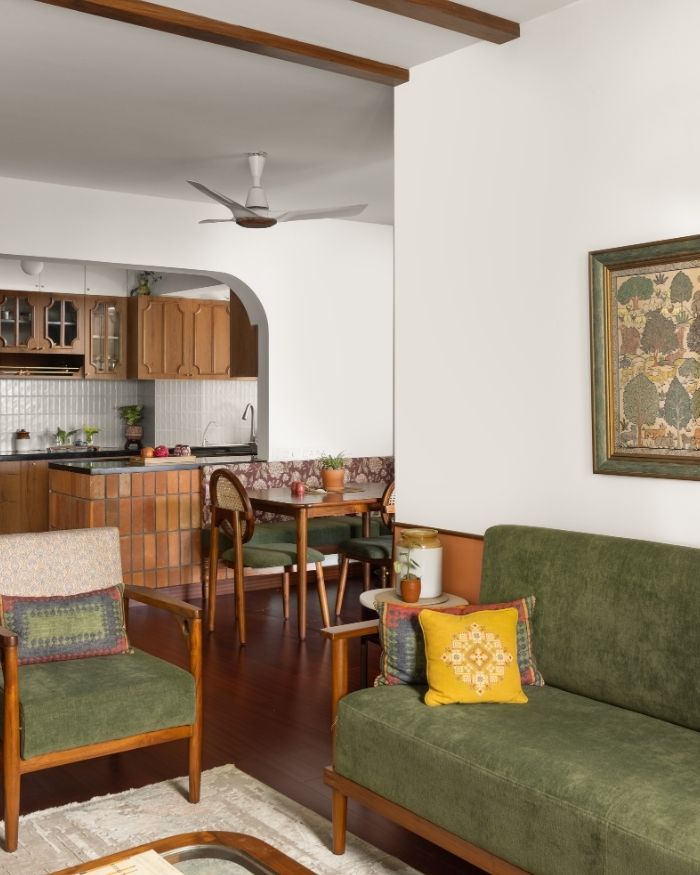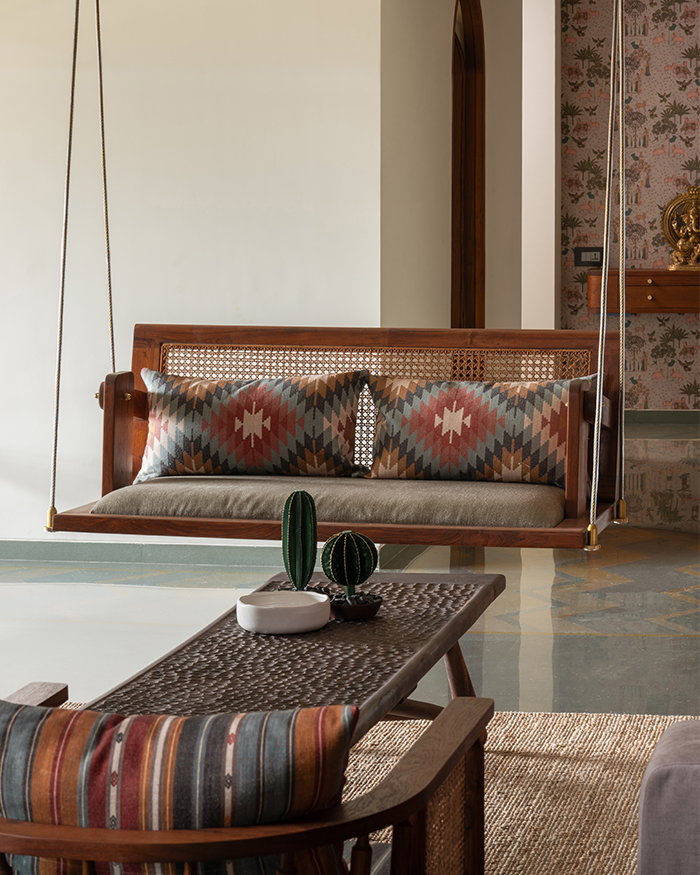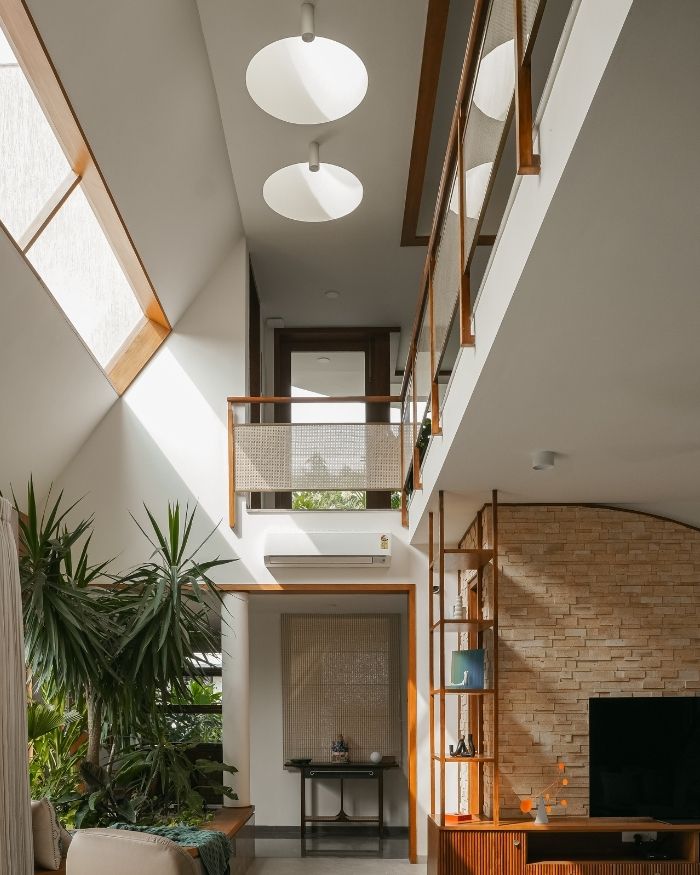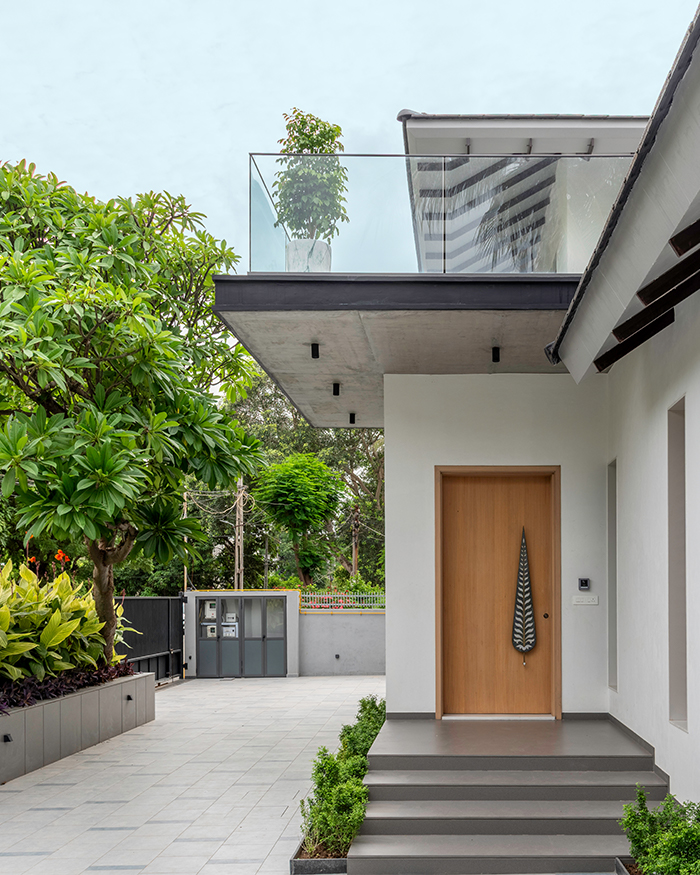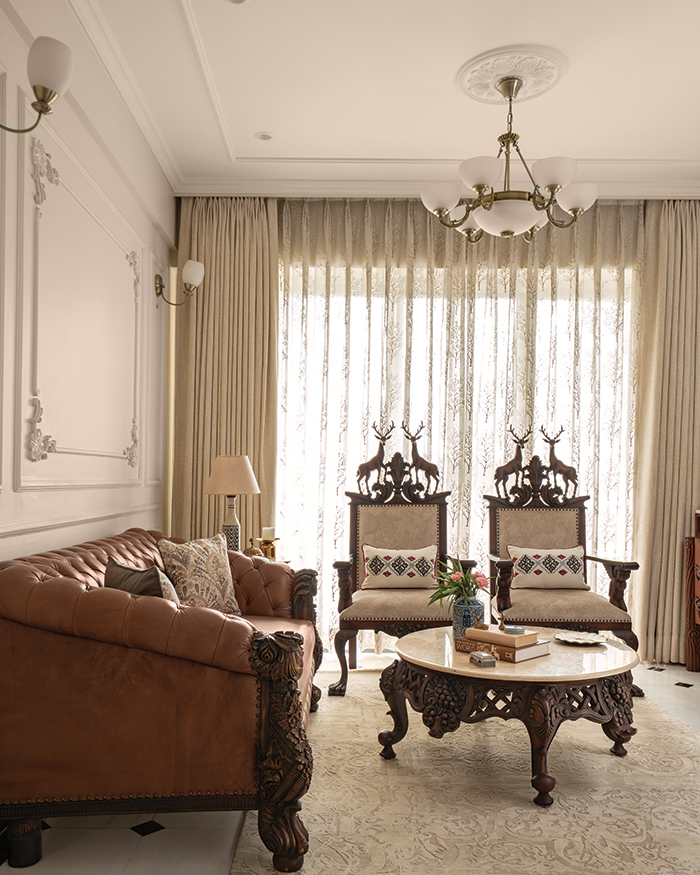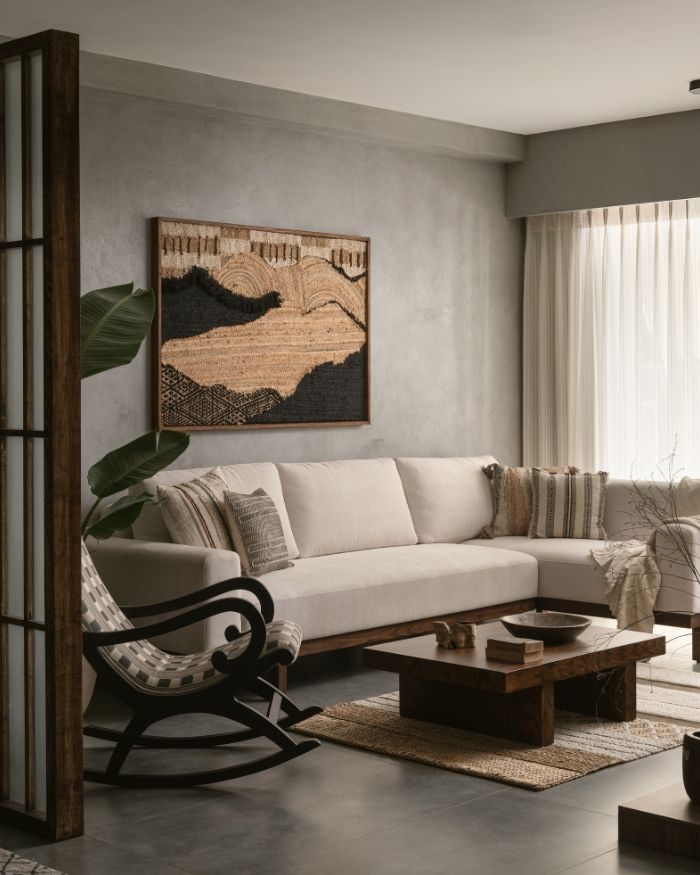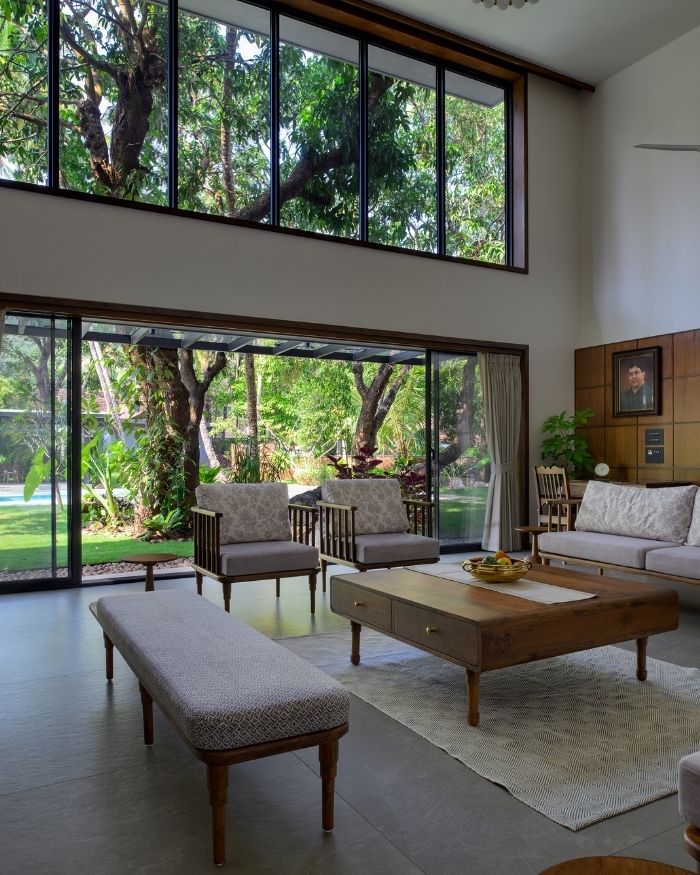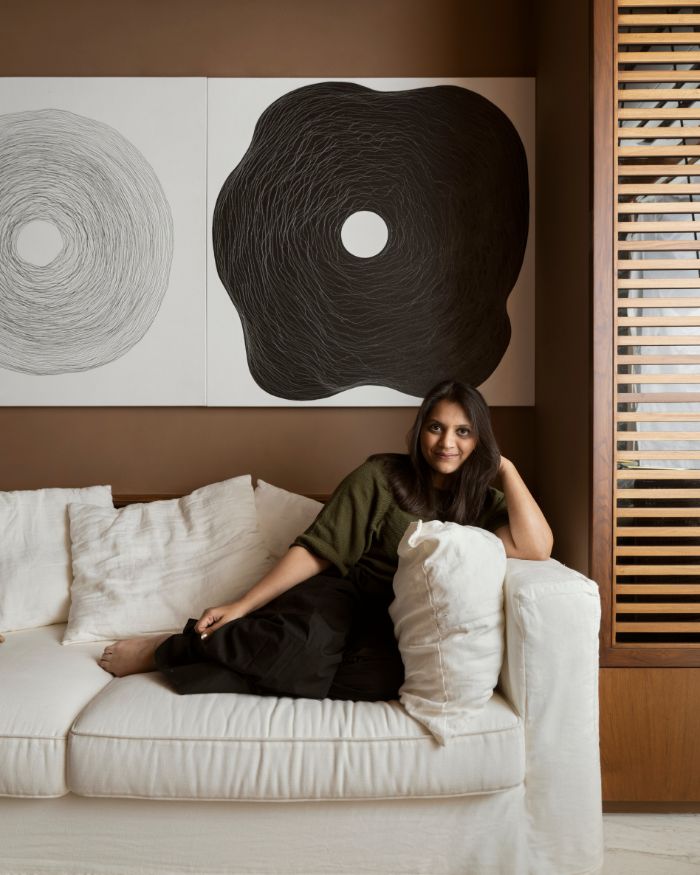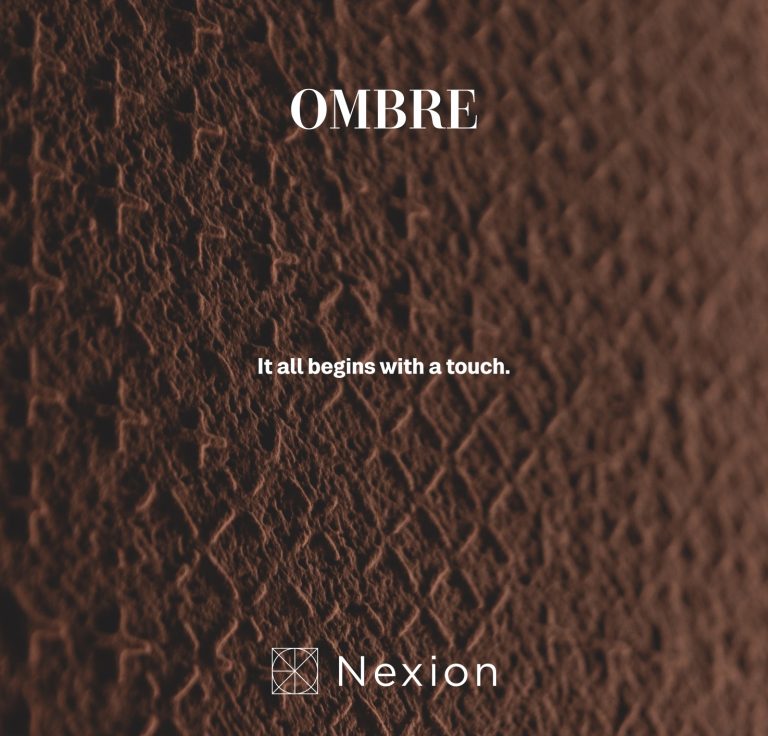Bambolim sits on the edge of everyday Goa. It’s one of those parts of Panjim where people visit to find respite, pockets of nature and secluded beaches. Along its narrow lanes, houses lean close to one another, their walls painted in colours matured by time. The plot for a 5,600 sq ft home entrusted to Studio 415 speaks of this everyday story. Tucked between other neighbouring houses on three sides, a road runs along this home’s front facade.
The owners, a Singapore-based family, sought a home that narrated tradition, suffused with accents in its interiors borrowed from the past. Tejas Yelve and Krishnaa Gabhawala, principal architects of Studio 415 responded with a design centred around a courtyard, with a pool becoming the dwelling’s heart. From the outside, the home reminds you of the old Indo-Portuguese bungalows with their raj-aangans. Inside, the space feels as if it’s tempered by old timber and terracotta, brightened by daylight through the arched windows across the basalt floors. “Seventy percent of the doors and windows are old, sourced from different parts of India. The columns supporting the dining verandah are 100-years old, sourced from Chennai,” the duo explains.
